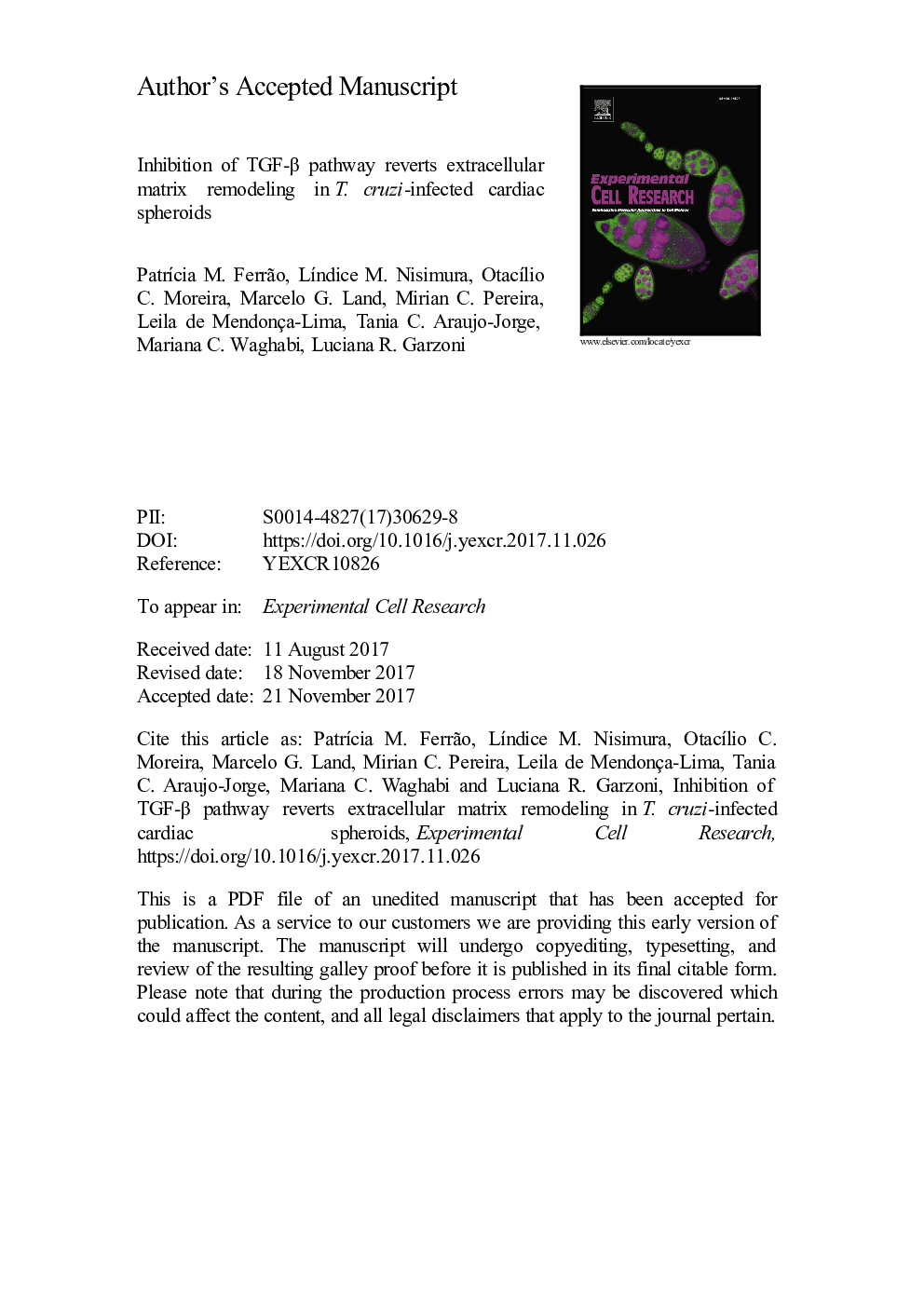| Article ID | Journal | Published Year | Pages | File Type |
|---|---|---|---|---|
| 8451496 | Experimental Cell Research | 2018 | 36 Pages |
Abstract
Chagasic cardiomyopathy (CC) is the main manifestation of Chagas Disease (CD). CC is a progressive dysfunctional illness, in which transforming growth factor beta (TGF-β) plays a central role in fibrogenesis and hypertrophy. In the present study, we tested in a three-dimensional (3D) model of cardiac cells culture (named cardiac spheroids), capable of mimicking the aspects of fibrosis and hypertrophy observed in CC, the role of TGF-β pathway inhibition in restoring extracellular matrix (ECM) balance disrupted by T. cruzi infection. Treatment of T. cruzi-infected cardiac spheroids with SB 431542, a selective inhibitor of TGF-β type I receptor, resulted in a reduction in the size of spheroids, which was accompanied by a decrease in parasite load and in fibronectin expression. The inhibition of TGF-β pathway also promoted an increase in the activity of matrix metalloproteinase (MMP)-2 and a decrease in tissue inhibitor of matrix metalloproteinase (TIMP)-1 expression, which may be one of the mechanisms regulating extracellular matrix remodeling. Therefore, our study provides new insights into the molecular mechanisms by which inhibition of TGF-β signaling reverts fibrosis and hypertrophy generated by T. cruzi during CC and also highlights the use of cardiac spheroids as a valuable tool for the study of fibrogenesis and anti-fibrotic compounds.
Related Topics
Life Sciences
Biochemistry, Genetics and Molecular Biology
Cancer Research
Authors
PatrÃcia M. Ferrão, LÃndice M. Nisimura, OtacÃlio C. Moreira, Marcelo G. Land, Mirian C. Pereira, Leila de Mendonça-Lima, Tania C. Araujo-Jorge, Mariana C. Waghabi, Luciana R. Garzoni,
